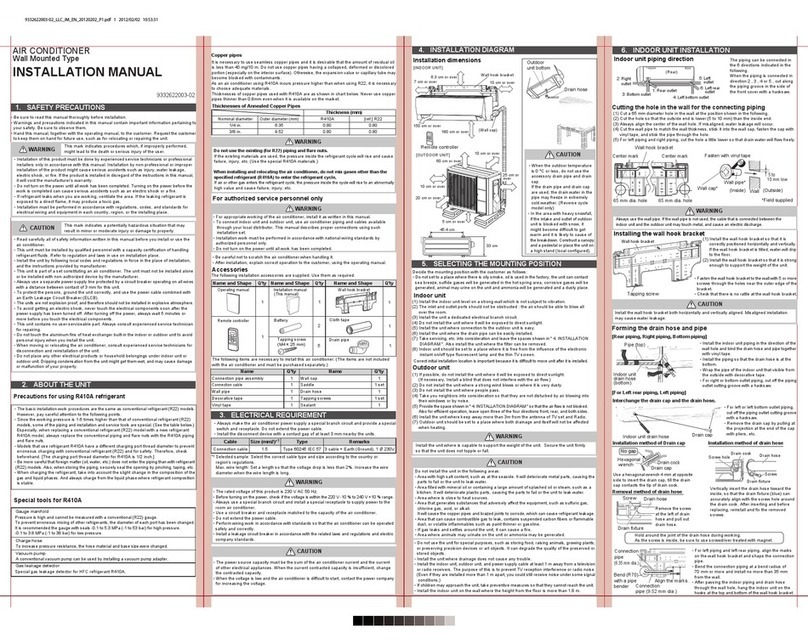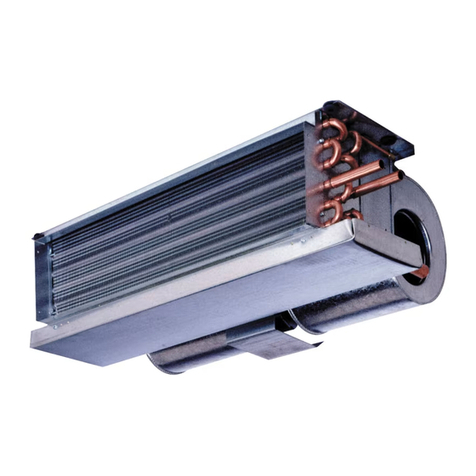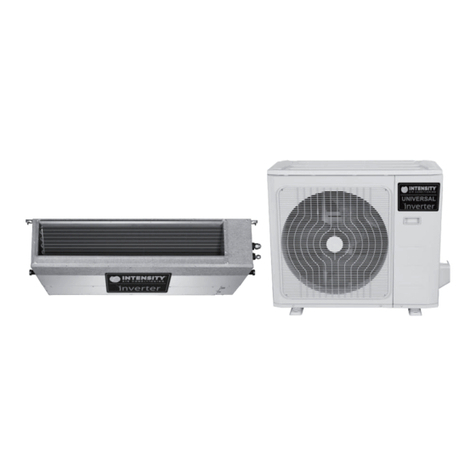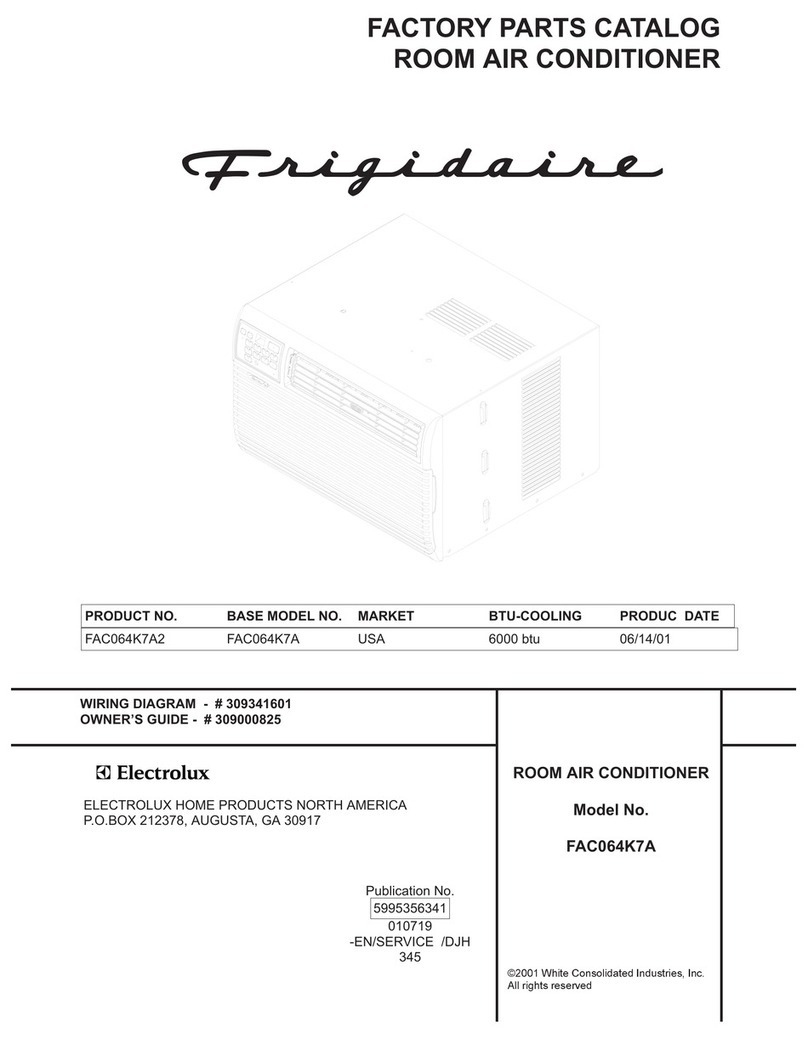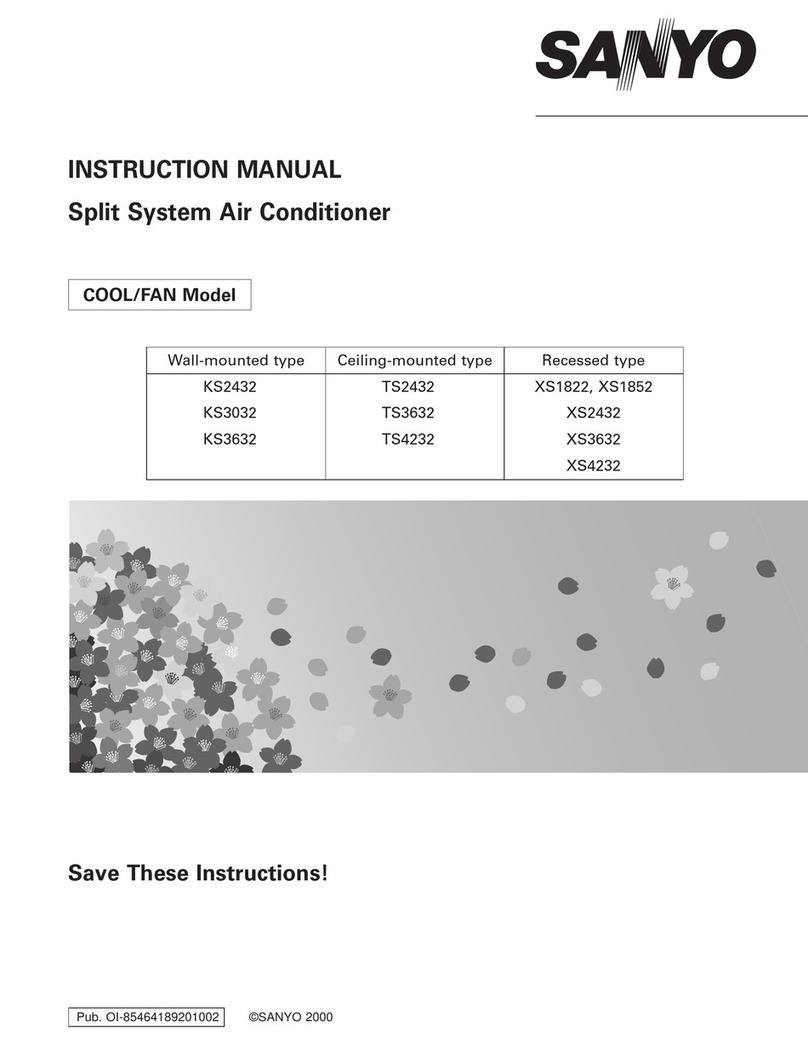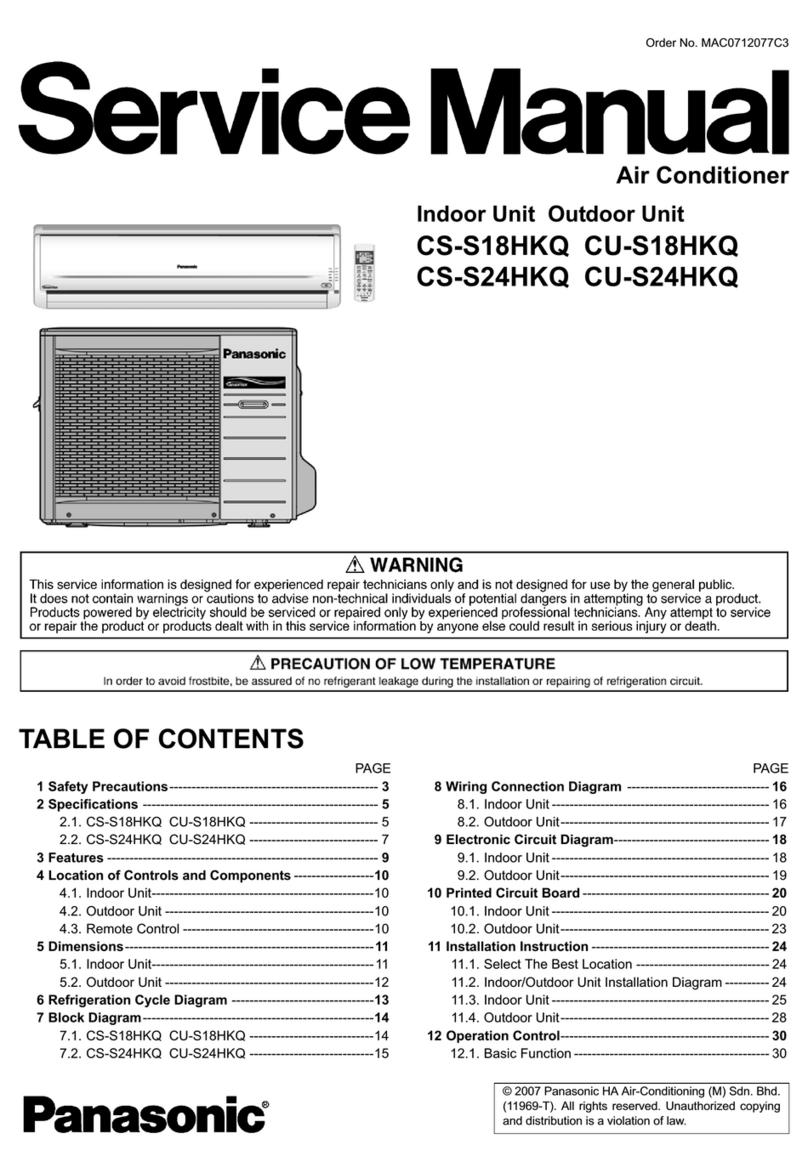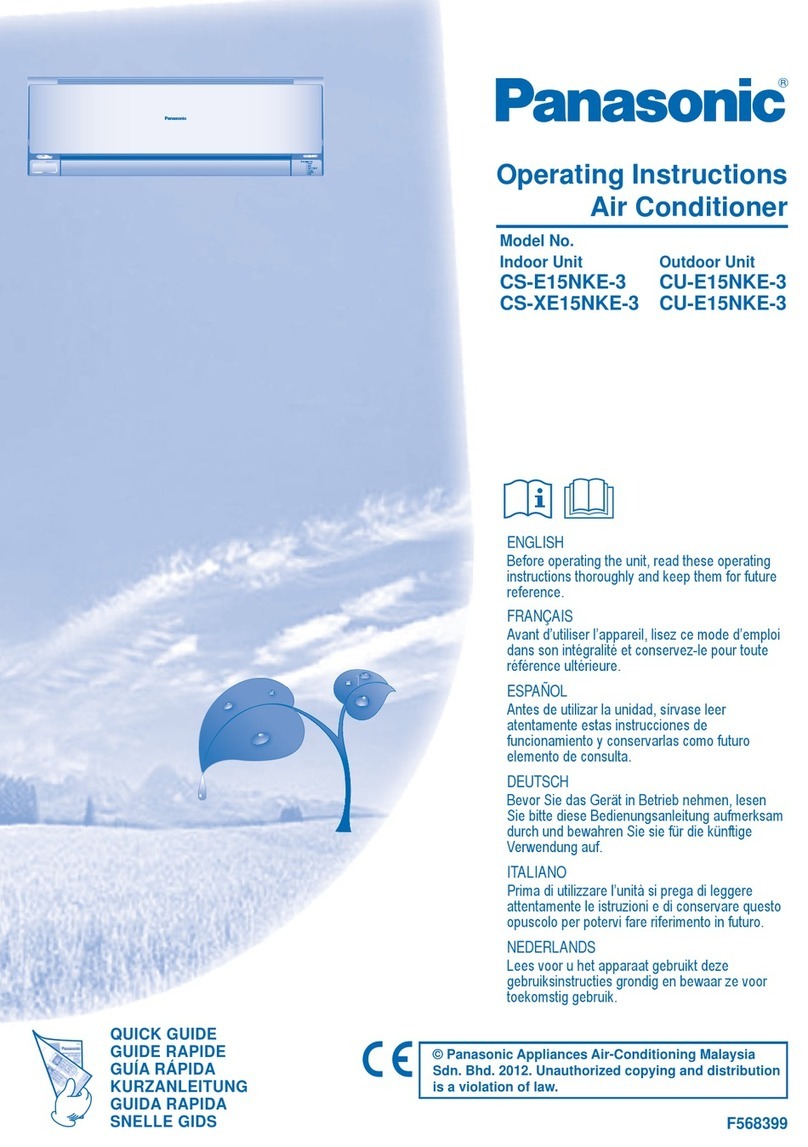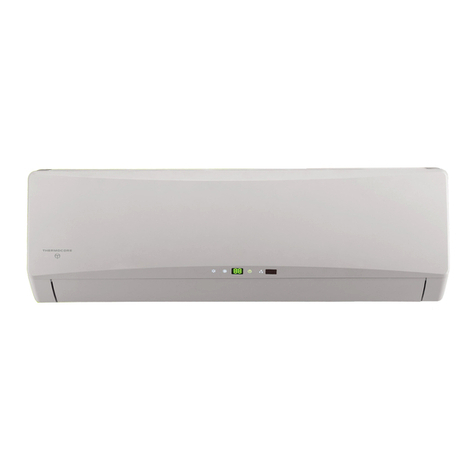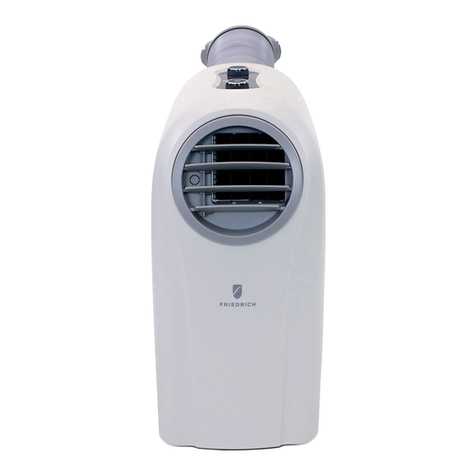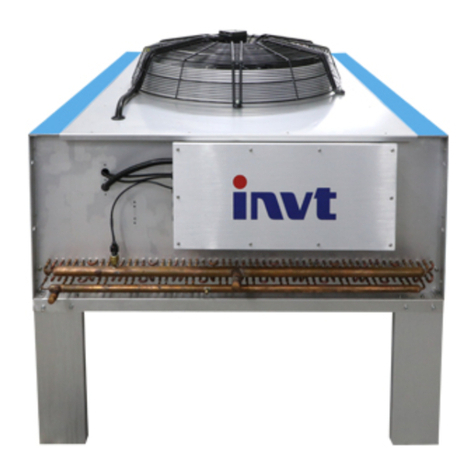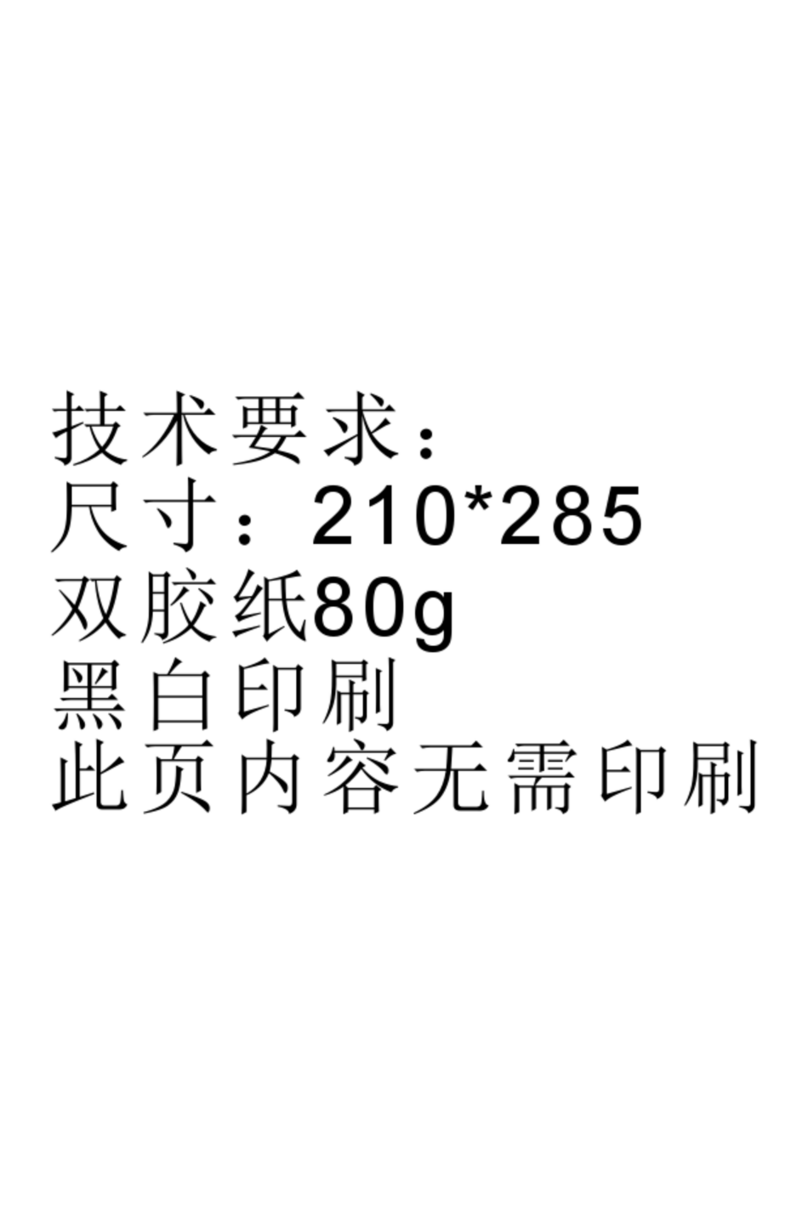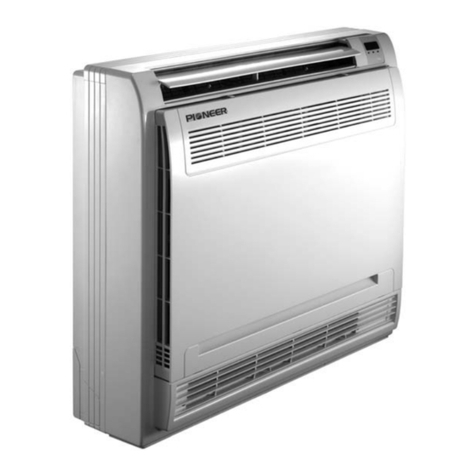
CONTENTS
VcolSer Rack Air Conditioner
III
CONTENTS
Preface-About the product and manual.........................................................................................II
Chapter 1 General ..........................................................................................................................1
1.1 Products Introduction...........................................................................................................1
1.2 Operating Parameters and Requirements.............................................................................2
1.3 Type Description..................................................................................................................2
1.4 System Composition ............................................................................................................2
1.5 Product Specification ...........................................................................................................3
1.5.1 Dimensions and Net Weight..........................................................................................3
1.5.2 External Structure..........................................................................................................3
Chapter 2 Receiving.......................................................................................................................5
2.1 Transportation ......................................................................................................................5
2.2 Receiving..............................................................................................................................5
2.2.1 Receiving Process Suggestions .....................................................................................5
2.2.2 External Checking .........................................................................................................6
2.2.3 Unboxing.......................................................................................................................7
2.2.4 Internal Checking ..........................................................................................................7
2.2.5 Storage...........................................................................................................................8
Chapter 3 Installation.....................................................................................................................9
3.1 Installation Site.....................................................................................................................9
3.2 Installation Form..................................................................................................................9
3.3 Mechanical Installation......................................................................................................10
3.3.1 Install Indoor Machine.................................................................................................10
3.3.2 Install Outdoor Machine..............................................................................................11
3.3.3 Connecting Tube..........................................................................................................12
3.4 Electrical Installation..........................................................................................................16
3.4.1 Operating the Project...................................................................................................16
3.4.2 Matters Needing Attention ..........................................................................................16
